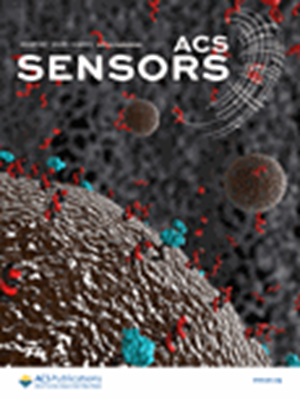Lychee-like Bi2MoO6 Spheres for Highly Sensitive Room-Temperature Phosphine Sensing
IF 9.1
1区 化学
Q1 CHEMISTRY, ANALYTICAL
引用次数: 0
Abstract
The increasing use of phosphine in various industries demands the development of reliable sensors. However, progress in this area has been slow, particularly for room-temperature detection. In this study, bismuth molybdate microspheres with a lychee-like structure (Lyc-Bi2MoO6) were prepared via a one-step solvothermal method, which can be employed for the detection of trace concentrations of phosphine. The solvent used was a mixture of isopropanol and ethylene glycol in a 3:1 ratio. Various characterization techniques and gas sensing performance tests demonstrated that Lyc-Bi2MoO6 is a potential phosphine-sensing material for room-temperature application. Sensing performance tests revealed that Lyc-Bi2MoO6 exhibited an impressive ability to detect trace concentrations of phosphine, with a practical detection limit as low as 150 ppb (response = 8.11), rapid response (around 1 min), and excellent long-term stability (a maximum response attenuation of 9.46% over 10 weeks). Density functional theory calculations further aided in the in-depth analysis and interpretation of the behavior and response mechanism of phosphine on the surface of Lyc-Bi2MoO6.

用于高灵敏室温磷化氢传感的荔枝状 Bi2MoO6 球体
磷化氢在各行各业的使用越来越多,要求开发可靠的传感器。然而,这一领域的进展缓慢,特别是在室温检测方面。本研究采用一步溶剂热法制备了具有荔枝样结构的钼酸铋微球Lyc-Bi2MoO6,该微球可用于痕量磷化氢的检测。所用溶剂为异丙醇和乙二醇的混合物,比例为3:1。各种表征技术和气敏性能测试表明,Lyc-Bi2MoO6是一种有潜力的室温磷化氢传感材料。传感性能测试表明,Lyc-Bi2MoO6具有令人印象深刻的检测痕量膦浓度的能力,实际检测限低至150 ppb(响应= 8.11),快速响应(约1分钟),以及出色的长期稳定性(10周内最大响应衰减为9.46%)。密度泛函理论计算进一步有助于深入分析和解释磷化氢在Lyc-Bi2MoO6表面的行为和响应机制。
本文章由计算机程序翻译,如有差异,请以英文原文为准。
求助全文
约1分钟内获得全文
求助全文
来源期刊

ACS Sensors
Chemical Engineering-Bioengineering
CiteScore
14.50
自引率
3.40%
发文量
372
期刊介绍:
ACS Sensors is a peer-reviewed research journal that focuses on the dissemination of new and original knowledge in the field of sensor science, particularly those that selectively sense chemical or biological species or processes. The journal covers a broad range of topics, including but not limited to biosensors, chemical sensors, gas sensors, intracellular sensors, single molecule sensors, cell chips, and microfluidic devices. It aims to publish articles that address conceptual advances in sensing technology applicable to various types of analytes or application papers that report on the use of existing sensing concepts in new ways or for new analytes.
 求助内容:
求助内容: 应助结果提醒方式:
应助结果提醒方式:


